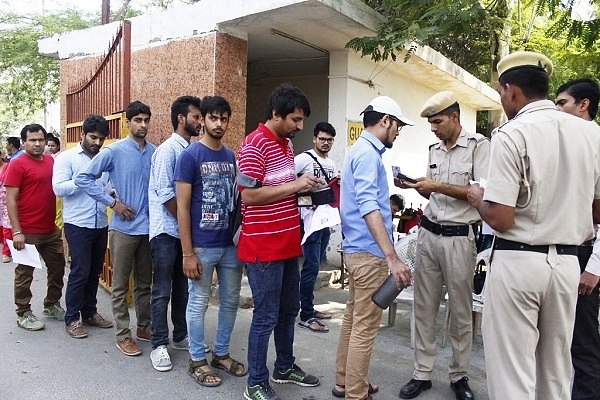Insta
UPSC CSE 2020 Prelims Examination: Revision Check-List For IAS Aspirants To Stay Stress-Free Ahead Of Exam

UPSC aspirants appearing for exam (Yogendra Kumar/Hindustan Times)
The Union Public Service Commission (UPSC) Civil Services Examination prelims is on 4 October 2020. Barely 20 days remain till the big day.
The marks of the prelims examination are not counted in the final scores, instead, the prelims cut-off is only used to select candidates for the next stage of the examination - the Mains.
After prelims, the candidates will get around 3 months and 15 days for the Mains preparation. However, this is the time to give complete focus to the prelims preparation.
It is extremely important that the students look at the past year papers, not just of the CSE but also other exams like CDS, CAPF etc. to gauge the trends. Many websites also provide the exam analysis.
Here is the question division for 2019 and 2018 papers from prepp.in by Sudeshna Bhar:
The previous year question papers also show that the difficulty of the papers is increasing. The general category cut-off mark was at 105.34 in 2017, it was 116 in 2016. In 2018, the cut-off mark was at 98. The cut-off for 2019 was also at 98.
In this situation, how should the candidates revise the syllabus in the last 20 days?
From the above observations, we can come up with an efficient revision plan. Candidates can see that more than 20 questions come from current affairs. Thus, the candidates are advised to thoroughly revise the current affairs. Candidates can find the strategy to revise current affairs here.
The static portion trend shows a large number of questions from History and Art and Culture portion. Now, the questions in this portion have been on the more difficult side.
In case, the student hasn’t prepared detailed notes, she should not waste a lot of time on preparing from the scratch the ancient, medieval and art & culture portions. The questions in this portion have been relatively more on the erratic side.
Instead, the candidates should solidify the modern history portion till independence, as questions here are relatively easier. For ancient, medieval and art & culture, already prepared noted should be revised.
Polity and Economy are other two areas that have relatively easy questions. Candidates should revise Lakshmikant thoroughly, with special focus on issues in current affairs, like the privilege motion, defection etc. The economy questions lean on the conceptual side, so concepts should be clear.
Government schemes are also an area to easily get marks. Science and Technology portion can be covered decently from the current affairs. Questions come from new technologies as well as space missions. The technologies related to COVID pandemic should especially be prepared, like the antibodies test, RT-PCR, vaccination etc.
In Geography, map questions seem to be dominating in 2019. So the aspirant should give special attention to maps while revising the current affairs.
Substantial number of questions are also asked from the Environment, Biodiversity and Agriculture portions. The candidate should pay special attention in current affairs, plus revise the already studied material.
Paper-solving is key. It also helps in the revision. Candidates should solve as many questions as possible.
Introducing ElectionsHQ + 50 Ground Reports Project
The 2024 elections might seem easy to guess, but there are some important questions that shouldn't be missed.
Do freebies still sway voters? Do people prioritise infrastructure when voting? How will Punjab vote?
The answers to these questions provide great insights into where we, as a country, are headed in the years to come.
Swarajya is starting a project with an aim to do 50 solid ground stories and a smart commentary service on WhatsApp, a one-of-a-kind. We'd love your support during this election season.
Click below to contribute.
Latest